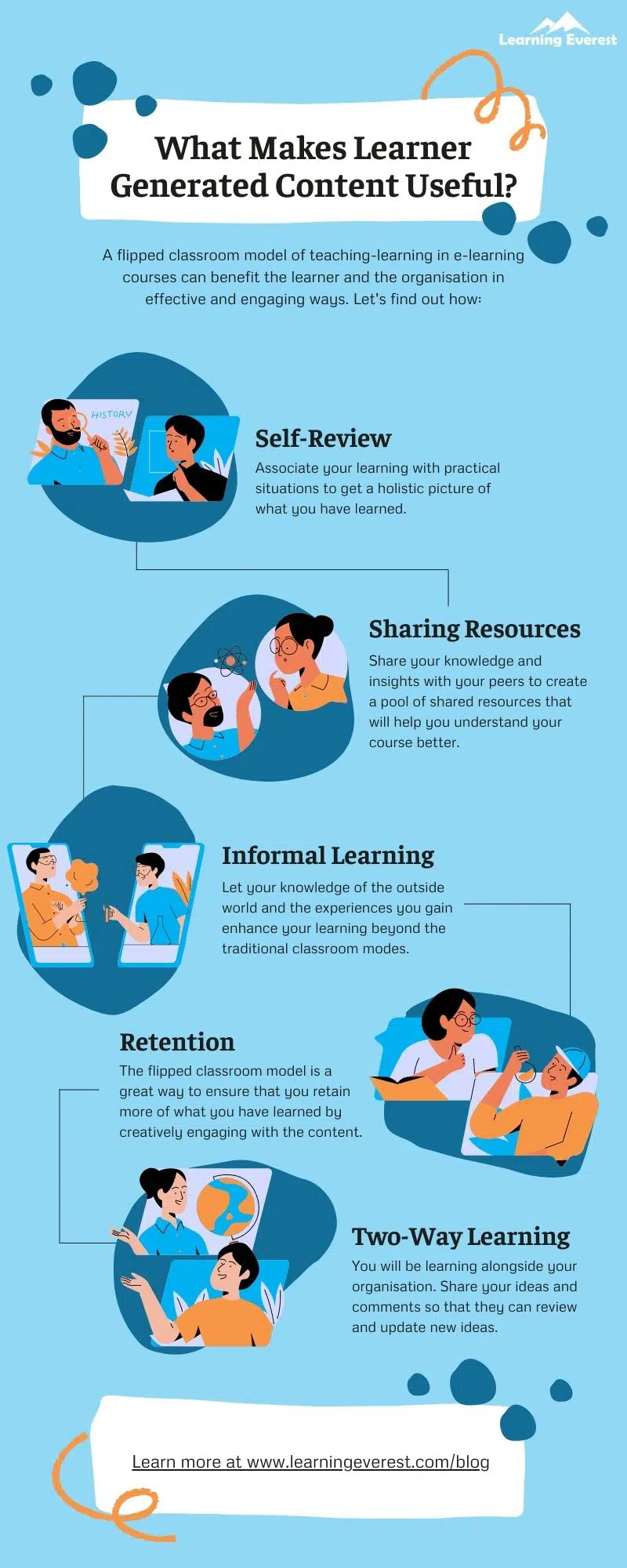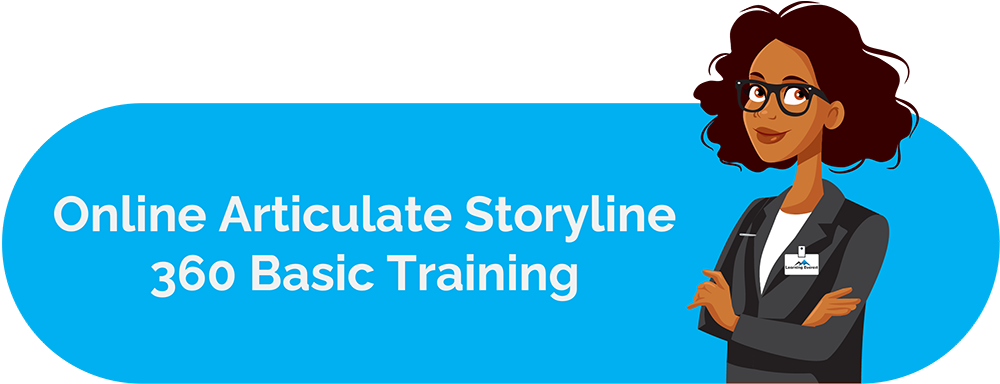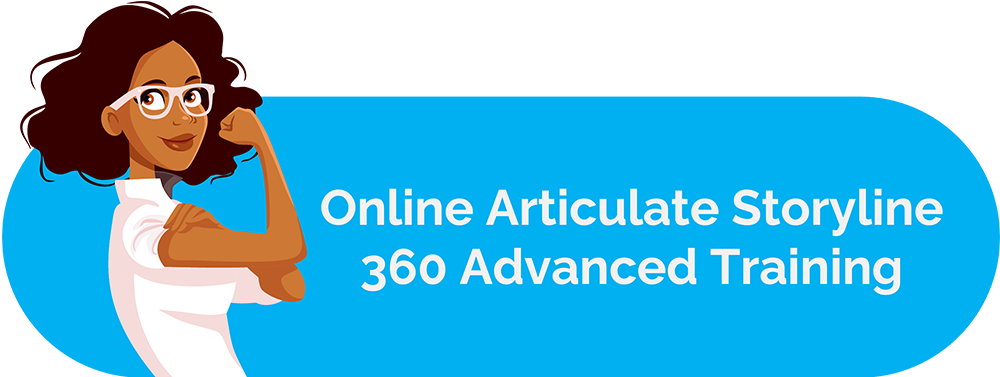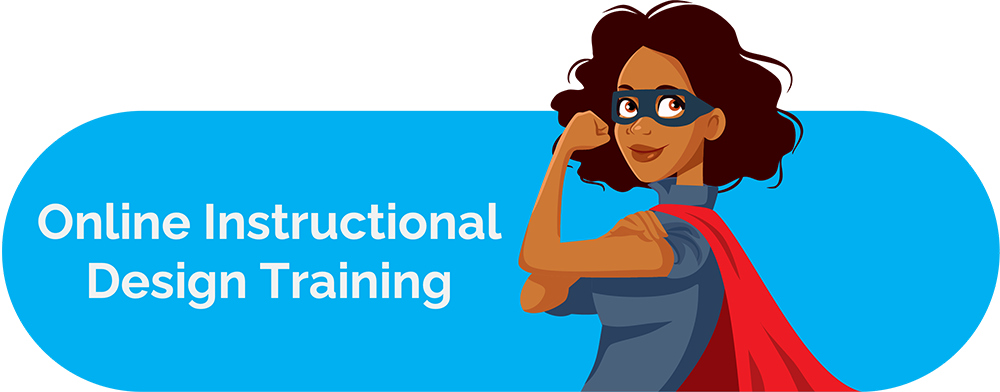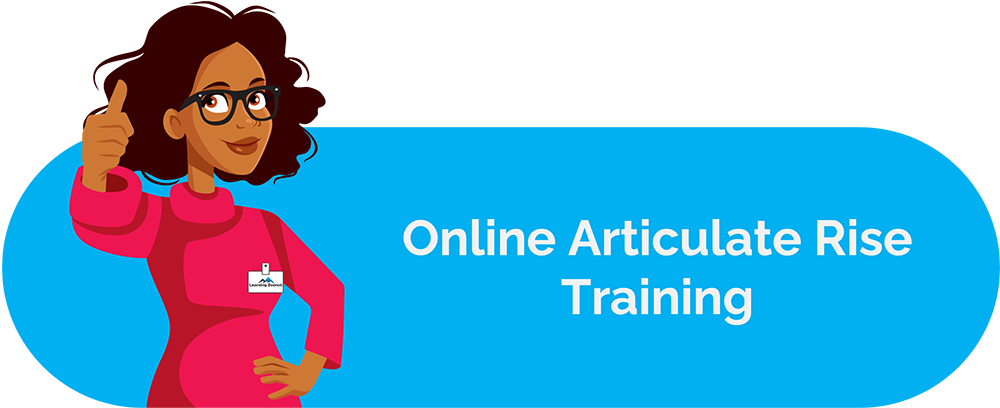In e-learning courses, the main aim for the learner while taking the course is to engage with it in such a manner that they can retain what they have learned. The approach of including learner generated content becomes a practical choice to make this possible. It is content that the learner creates in e-learning courses. It can either be direct additions to the course or extra material that helps the learner understand it better.
Table of Contents
The purpose is to facilitate knowledge transfer amongst peers taking the course. Apart from the content available to these learners, they will collect different types of media to help each other understand the course better.
A famous example of learner generated content is Wikipedia. Other users add the content that is available on the website. This creates a pool of knowledge that everyone can access on the internet.
Using this logic on e-learning courses, alongside the content that the learner consumes from the course itself, they can be guided with appropriate methods to engage with the course.
Why is Learning Generated Content Useful in an e-Learning Course?
A shift from traditional learning modes to e-learning helps learners take the course at their own pace and comfort. It even gives them the choice of taking the course from whichever place they want. Despite these advantages, it is always good to look for new approaches to engage learners with their studies.
Here are some reasons why using learner generated content in e-learning courses is effective:
- Self-Review: Learning aims to assimilate new study material and use the teaching practically. When learners are asked to associate instances related to the topic they have learned, it increases their engagement with the course. This helps the learner assess whether they have fully understood what they have learnt.
- Sharing Resources: As learners meet their learning needs with the courses, they creatively engage with the course by coming up with learner generated content. Sharing these ideas amongst their peers creates a pool of resources. It enhances the learner’s understanding of the content and helps them think outside the box, developing their interest creatively.
- Informal Learning: We do not stop at what we learn in the classroom or courses. Our experiences and peer learning helps us know informally. This enables the association of knowledge within and outside the traditional modes of teaching and learning.
- Retention: Many users are divided on using e-learning courses over traditional learning models as the latter gives them the scope to ask questions and clarify from the teachers. This is why e-learning courses should be strategized as interactive to increase learners’ content retention. It can be further improved by asking the learner to associate the course with other media and content.
- Two-Way Learning: Beyond what the organization offers in the course when learners share content, it creates a vast range of ways to look at and engage with content. It is essential that correct information reaches peers. Organizations have the power to oversee what content goes into the Learning Management System (LMS) and review it. Similarly, even the learners can make internally comments and suggestions to a course. This can help update content and develop new ways to engage with the content.
How to Encourage Learner Generated Content?
The many advantages of engaging your learners to generate content of their own should make you interested in reaping its benefits. There are many creative ways of doing so. Let’s discuss some such methods:
1. Discussion Prompts
After certain sections in the course, you can open the floor for discussion to the learners. It can be a forum in the LMS where every learner must answer a thought-provoking question. Learners will be able to view peers’ answers once they submit their own. A variety of solutions will create different ways of engaging with the course.
2. Case Studies
You can provide the learner with a case study and ask them to solve it. Responding directly to the course increases interaction and is a great way to reinforce theory practically. Since case studies are examples related to the course, it becomes easier for learners to situate their learning in real life.
3. Writing an e-Journal
Instead of opening up a discussion prompt, a learner can also be given the scope to have an e-journal. The idea is similar to the discussion prompt. The learner will be asked to record their thoughts on some questions asked. The difference is that these answers will be available only to them. They can review their answers at any point in the course. The learner will also track their learnings as the course progresses.
4. Create a Blog
When you ask a learner to create a blog, it opens multiple creative avenues. A blog does not need to contain content that reiterates the course’s ideas. It can manifest the course in any way. The learner can write articles on thoughts related to the course. They can be encouraged to paint, click a picture, sing, or make a video related to the course. The blog becomes a creative, analytical, or informative space, one in which the learner has the choice to choose how they wish to express themselves.
5. Create a YouTube Channel
Learners can create videos on the course they have taken. They could be asked to answer a question with a video, show what they have learned with an activity, or complete a task given to them. These can then be uploaded on the organisation’s YouTube channel, where other learners can also view and comment on it.
6. Using Social Media
Social media can be used to create a learning community. The organization could open groups on these platforms to discuss and share with their peers. You could open a page where tips related to the course are posted. The page could also share content from learners who submit to the page. This gives the person controlling the page to review the content that goes onto the page. Learners will share and learn informally as the community grows.
7. Weekly/Monthly Discussion Topics
Encouraging learners to keep the conversation going will need some support from the organization’s side. You can provide a topic to your community of learners. It will give them something to think and write about. Not only that, but all the learners can also discuss a common topic, increasing engagement.
If you think about it, this concept is quite like flipped classrooms. In flipped classrooms, learners are asked to present the content to their peers instead of just the teacher delivering lectures. Similarly, with learner generated content, the floor is opened to the learners to learn, engage, and share their knowledge with their peers and the organization.


